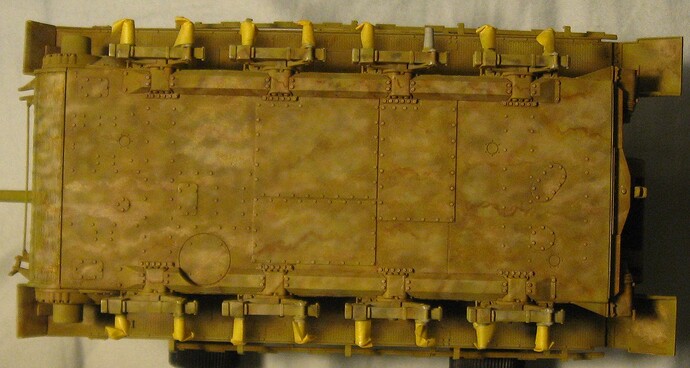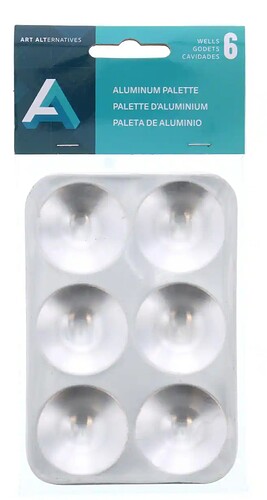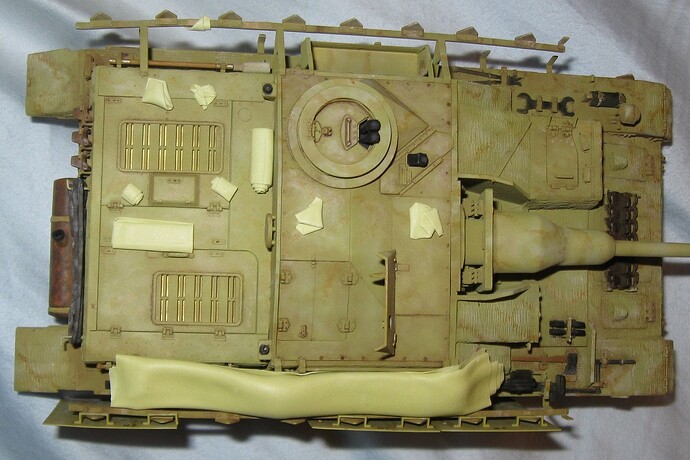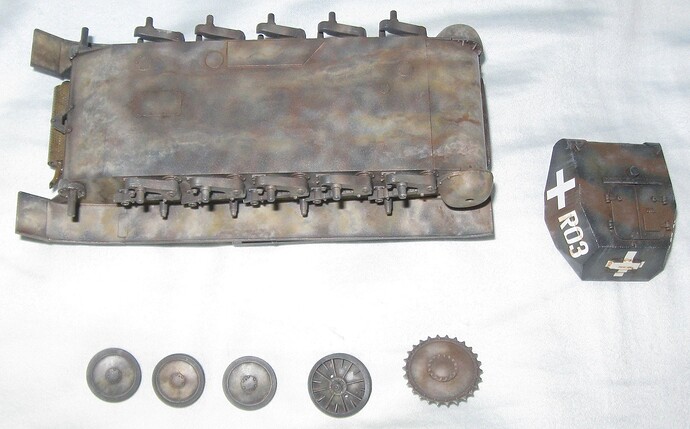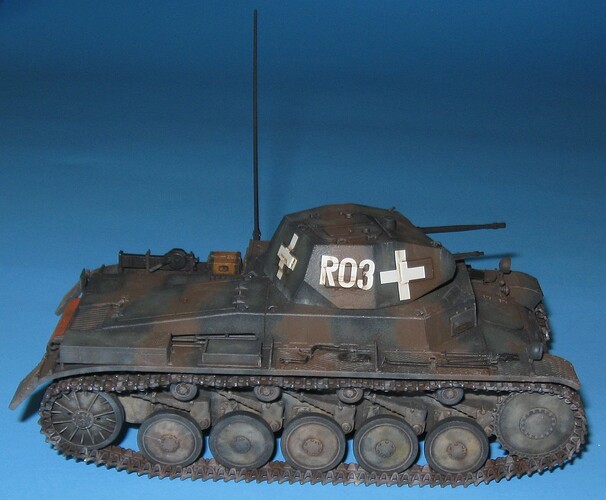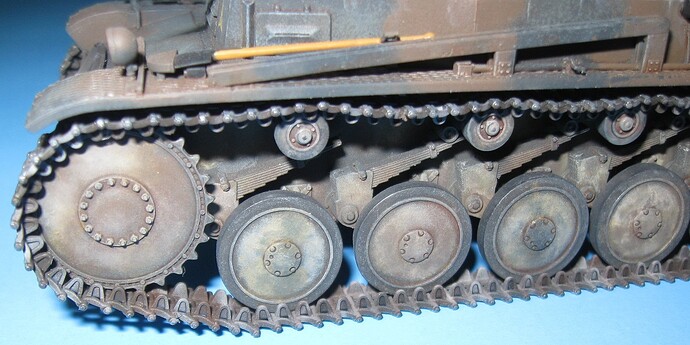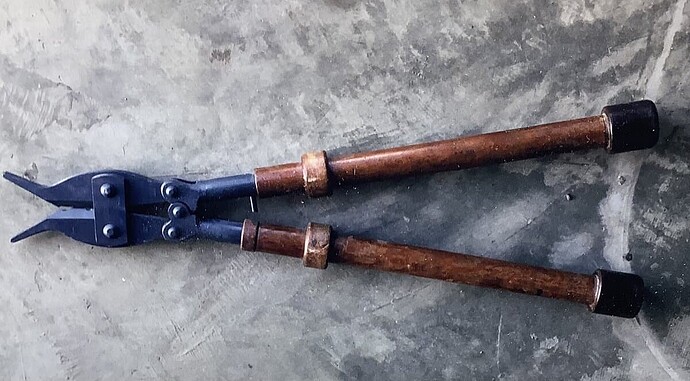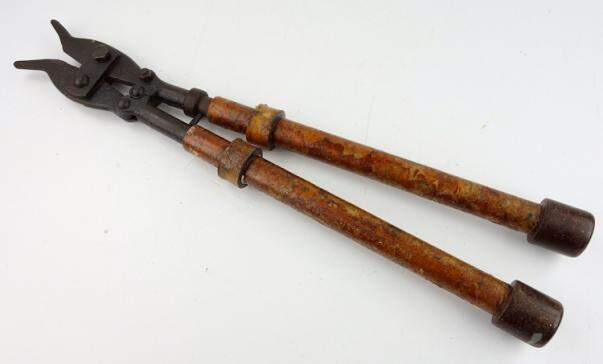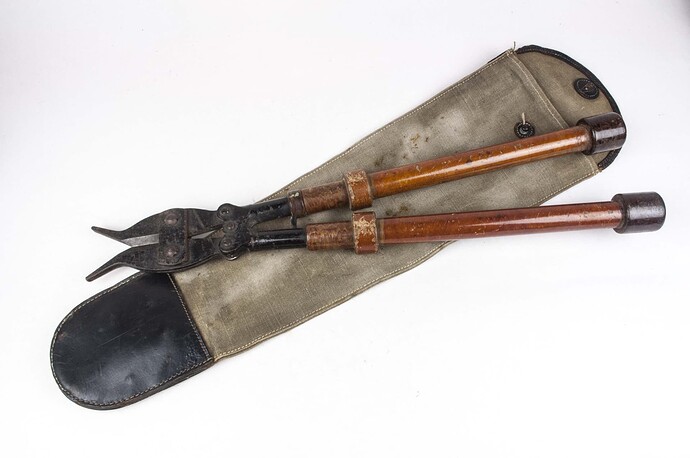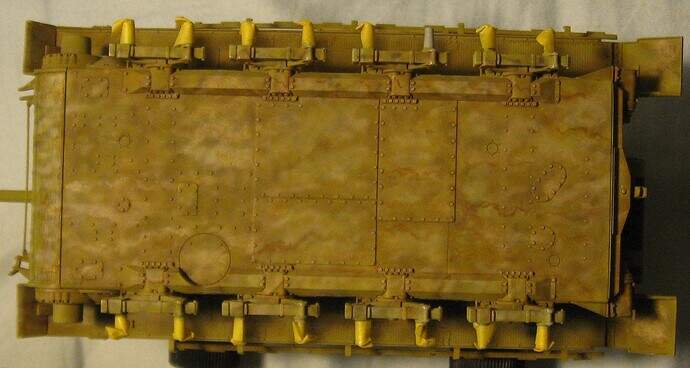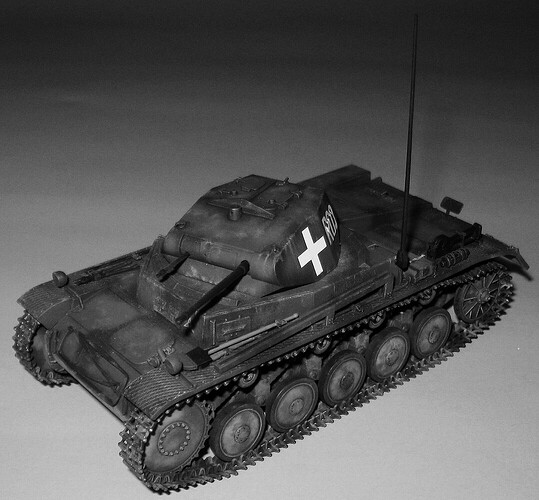Thank you once again for the comments and advice.
Two weeks back, I did some reading on pin wash techniques and began using the methods suggested in the thread Pin Wash Woes.
Up until two weeks ago, everything I have built over the last few months was sealed with Vallejo acrylic Satin Clear, then subjected to a pin wash of Mig or Winsor & Newton oil paints thinned with Mona Lisa Odorless Mineral Spirits. Vallejo acrylic clear coats lay down very nicely–I thin them significantly and airbrush multiple coats–but Vallejo paints are so toothy, surfaces usually feel very rough even after multiple clear coats. The oil paints I am using have a lot of fine pigment and flow very well.
My oil washes are fanning out on the toothy surfaces left by the satin clear coats. Capillary action pulls the washes into all the microscopic nooks and crannies remaining on the surface.
The Sturmgeshutz IV was given a satin clear coat leaving a rough surface as described above. After reading the post I linked, I began preparing each surface for a wash by flooding it with straight odorless mineral spirits. This worked only slightly better. The wash still gets pulled away from details by the toothy surface.
Weathering the toothy surface with straight oil paint first, then applying a pin wash, works somewhat better. Adjusting the ratio of paint to thinner in the wash also makes the situation better or worse.
While finishing a F-15E Strike Eagle, I discovered that lightly sanding a clear coated surface will remove the toothy texture. Unfortunately, armored vehicles are festooned with so many greebles, sanding out a toothy surface is not practical.
For the Panzer II, I used Vallejo acrylic Gloss Clear. This produces what I can only describe as a glossy toothy surface–it feels smooth and rough at the same time. After flooding the bottom of the Panzer II with odorless mineral spirits, I applied a pin wash. This worked somewhat better than the previous attemots but still suffered a lot of spread. After cleaning up the wash as best I could using a brush dampened with more mineral spirits, I began applying dirt stains with oil paint and…pretty much ended up with the bottom of the Sturmgeshutz. 
I have watched many videos of modelers applying pin washes. Their washes cling very tightly to surface details without spreading.
Fifteen years ago, using Model Master enamel paints and Model Master acrylic clear coats, I had exactly the same problem but it was even worse.
Gloss clear coat works better than satin clear coat. Flooding the wash area with thinner helps. Using a higher pigment load in the wash helps with the caveat that it also requires more post wash clean up. Sanding clear coats to produce a smooth surface definitely helps but is mostly not possible.
With regards the weathering, in addition to everything else, I am having a Goldilocks Problem. I am not even sure what look I want to produce.
I will spend the rest of today applying pin washes and oil paints to the Panzer II. As I wrote earlier, it was given an acrylic gloss coat making things a little easier. However, I am still doing multiple things fundamentally wrong. Thus my vexation.
